The Psychological Effects of Digital Companies’ Employees during the Phase of COVID-19 Pandemic Extracted from Online Employee Reviews
Abstract
:1. Introduction
2. Materials and Methods
2.1. Online Employees’ Reviews Datasets
2.2. Methods
3. Results
3.1. Extracting Psychological Effects from Numerical Evaluations
3.2. Extracting Psychological Effects from the Textual Reviews
4. Discussion and Outlook
Author Contributions
Funding
Institutional Review Board Statement
Informed Consent Statement
Data Availability Statement
Conflicts of Interest
References
- Wu, T.C.; Jia, X.Q.; Shi, H.F.; Niu, J.Q.; Yin, X.H.; Xie, J.L.; Wang, X.L. Prevalence of mental health problems during the COVID-19 pandemic: A systematic review and meta-analysis. J. Affect. Disord. 2021, 281, 91–98. [Google Scholar] [CrossRef] [PubMed]
- Maykrantz, S.A.; Nobiling, B.D.; Oxarart, R.A.; Langlinais, L.A.; Houghton, J.D. Coping with the crisis: The effects of psychological capital and coping behaviors on perceived stress. Int. J. Workplace Health Manag. 2021, 14, 650–665. [Google Scholar] [CrossRef]
- Lee, H. Changes in workplace practices during the COVID-19 pandemic: The roles of emotion, psychological safety and organisation support. J. Organ. Eff.-People Perform. 2021, 8, 97–128. [Google Scholar] [CrossRef]
- Radhakrishnan, B.L.; Kirubakaran, E.; Belfin, R.V.; Selvam, S.; Sagayam, K.M.; Elngar, A.A. Mental health issues and sleep quality of Indian employees and higher education students during COVID-19 lockdown. Int. J. Intell. Eng. Inform. 2021, 9, 193–210. [Google Scholar] [CrossRef]
- Deng, J.W.; Zhou, F.W.; Hou, W.T.; Silver, Z.; Wong, C.Y.; Chang, O.; Huang, E.M.; Zuo, Q.K. The prevalence of depression, anxiety, and sleep disturbances in COVID-19 patients: A meta-analysis. Ann. N. Y. Acad. Sci. 2021, 1486, 90–111. [Google Scholar] [CrossRef] [PubMed]
- Dagnino, P.; Anguita, V.; Escobar, K.; Cifuentes, S. Psychological Effects of Social Isolation Due to Quarantine in Chile: An Exploratory Study. Front. Psychiatry 2020, 11, 1232. [Google Scholar] [CrossRef]
- Anicich, E.M.; Foulk, T.A.; Osborne, M.R.; Gale, J.; Schaerer, M. Getting Back to the “New Normal”: Autonomy Restoration During a Global Pandemic. J. Appl. Psychol. 2020, 105, 931–943. [Google Scholar] [CrossRef]
- Talevi, D.; Socci, V.; Carai, M.; Carnaghi, G.; Faleri, S.; Trebbi, E.; di Bernardo, A.; Capelli, F.; Pacitti, F. Mental health outcomes of the CoVID-19 pandemic. Riv. Psichiatr. 2020, 55, 137–144. [Google Scholar] [CrossRef]
- Ardebili, M.E.; Naserbakht, M.; Bernstein, C.; Alazmani-Noodeh, F.; Hakimi, H.; Ranjbar, H. Healthcare providers experience of working during the COVID-19 pandemic: A qualitative study. Am. J. Infect. Control 2021, 49, 547–554. [Google Scholar] [CrossRef]
- Kazgan, A.; Yildiz, S.; Kurt, O. The relationship between hope in healthcare employees and social support and coping ability during the outbreak process. Ann. Clin. Anal. Med. 2021, 12, 377–383. [Google Scholar] [CrossRef]
- Arpacioglu, M.S.; Baltaci, Z.; Unubol, B. Burnout, fear of Covid, depression, occupational satisfaction levels and related factors in healthcare professionals in the COVID-19 pandemic. Cukurova Med. J. 2021, 46, 88–100. [Google Scholar] [CrossRef]
- Du, Y.X.; Liu, H. Analysis of the Influence of Psychological Contract on Employee Safety Behaviors against COVID-19. Int. J. Environ. Res. Public Health 2020, 17, 6747. [Google Scholar] [CrossRef] [PubMed]
- Bahar, A.; Kocak, H.S.; Baglama, S.S.; Cuhadar, D. Can Psychological Resilience Protect the Mental Health of Healthcare Professionals during the COVID-19 Pandemic Period? Dubai Med. J. 2020, 3, 133–139. [Google Scholar] [CrossRef]
- Akman, C.; Cetin, M.; Toraman, C. The analysis of emergency medicine professionals’ occupational anxiety during the COVID-19 pandemic. Signa Vitae 2021, 17, 103–111. [Google Scholar] [CrossRef]
- Tengilimoglu, D.; Zekioglu, A.; Tosun, N.; Isik, O.; Tengilimoglu, O. Impacts of COVID-19 pandemic period on depression, anxiety and stress levels of the healthcare employees in Turkey. Leg. Med. 2021, 48, 101811. [Google Scholar] [CrossRef]
- Bernardino, E.; Nascimento, J.D.d.; Raboni, S.M.; Sousa, S.M.d. Care management in coping with COVID-19 at a teaching hospital. Rev. Bras. Enferm. 2021, 74, e20200970. [Google Scholar] [CrossRef]
- Lohana, S.; Zaidi, N.H.; Zaidi, T.H.; Saahil, K.; Novlani, K. Psychological impact of Corona Virus Disease on genera population in Karachi. World Fam. Med. 2021, 19, 59–70. [Google Scholar] [CrossRef]
- Golden, E.A.; Zweig, M.; Danieletto, M.; Landell, K.; Nadkarni, G.; Bottinger, E.; Katz, L.; Somarriba, R.; Sharma, V.; Katz, C.L.; et al. A Resilience-Building App to Support the Mental Health of Health Care Workers in the COVID-19 Era: Design Process, Distribution, and Evaluation. JMIR Form. Res. 2021, 5, e26590. [Google Scholar] [CrossRef]
- Blake, H.; Bermingham, F.; Johnson, G.; Tabner, A. Mitigating the Psychological Impact of COVID-19 on Healthcare Workers: A Digital Learning Package. Int. J. Environ. Res. Public Health 2020, 17, 2997. [Google Scholar] [CrossRef]
- Akyol, P.K. Museum Activities During and After the Covid-19 Pandemic. Milli Folk. 2020, 2020, 72–86. [Google Scholar]
- Andel, S.A.; Shen, W.; Arvan, M.L. Depending on Your Own Kindness: The Moderating Role of Self-Compassion on the Within-Person Consequences of Work Loneliness During the COVID-19 Pandemic. J. Occup. Health Psychol. 2021, 26, 276–290. [Google Scholar] [CrossRef] [PubMed]
- Wu, X.Y.; Lin, L.; Wang, J. When does breach not lead to violation? A dual perspective of psychological contract in hotels in times of crisis. Int. J. Hosp. Manag. 2021, 95, 102887. [Google Scholar] [CrossRef]
- Pathak, D.; Joshi, G. Impact of psychological capital and life satisfaction on organizational resilience during COVID-19: Indian tourism insights. Curr. Issues Tour. 2021, 24, 2398–2415. [Google Scholar] [CrossRef]
- Yorulmaz, M.; Sevinc, F. Supervisor support and turnover intentions of yacht captains: The role of work-family conflict and psychological resilience during the COVID-19 pandemic. Int. J. Contemp. Hosp. Manag. 2021, 33, 1554–1570. [Google Scholar] [CrossRef]
- Como, R.; Hambley, L.; Domene, J. An Exploration of Work-Life Wellness and Remote Work During and Beyond COVID-19. Can. J. Career Dev. 2020, 20, 46–56. [Google Scholar]
- Rosemberg, M.A.S.; Adams, M.; Polick, C.; Li, W.V.; Dang, J.; Tsai, J.H.C. COVID-19 and mental health of food retail, food service, and hospitality workers. J. Occup. Environ. Hyg. 2021, 18, 169–179. [Google Scholar] [CrossRef]
- Khawaja, K.F.; Sarfraz, M.; Rashid, M.; Rashid, M. How is COVID-19 pandemic causing employee withdrawal behavior in the hospitality industry? An empirical investigation. J. Hosp. Tour. Insights 2021. ahead-of-print. [Google Scholar] [CrossRef]
- Ruiz-Frutos, C.; Ortega-Moreno, M.; Allande-Cusso, R.; Ayuso-Murillo, D.; Dominguez-Salas, S.; Gomez-Salgado, J. Sense of coherence, engagement, and work environment as precursors of psychological distress among non-health workers during the COVID-19 pandemic in Spain. Saf. Sci. 2021, 133, 105033. [Google Scholar] [CrossRef]
- Obrenovic, B.; Du, J.G.; Godinic, D.; Baslom, M.M.M.; Tsoy, D. The Threat of COVID-19 and Job Insecurity Impact on Depression and Anxiety: An Empirical Study in the USA. Front. Psychol. 2021, 12, 648572. [Google Scholar] [CrossRef]
- Merchant, R.M.; Lurie, N. Social Media and Emergency Preparedness in Response to Novel Coronavirus. Jama-J. Am. Med Assoc. 2020, 323, 2011–2012. [Google Scholar] [CrossRef] [Green Version]
- Kahn, J.H.; Tobin, R.M.; Massey, A.E.; Anderson, J.A. Measuring Emotional Expression with the Linguistic Inquiry and Word Count. Am. J. Psychol. 2007, 120, 263–286. [Google Scholar] [CrossRef]
- Seraj, S.; Blackburn, K.G.; Pennebaker, J.W. Language left behind on social media exposes the emotional and cognitive costs of a romantic breakup. Proc. Natl. Acad. Sci. USA 2021, 118, e2017154118. [Google Scholar] [CrossRef] [PubMed]
- Theurer, C.P.; Schäpers, P.; Tumasjan, A.; Welpe, I.; Lievens, F. What you see is what you get? Measuring companies’ projected employer image attributes via companies’ employment webpages. Hum. Resour. Manag. 2022, 1–19. [Google Scholar] [CrossRef]
- Wu, P.; Zhao, N.; Li, S.; Liu, Z.; Wang, Y.; Liu, T.; Liu, X.; Zhu, T. Exploring the Psychological Effects of COVID-19 Home Confinement in China: A Psycho-Linguistic Analysis on Weibo Data Pool. Front. Psychol. 2021, 12, 587308. [Google Scholar] [CrossRef]
- Bischoff, T.; Hynes, K.; Tambling, R.; Kingzette, A. Marriage and Family Therapists’ Reporting of Telehealth Use on Practice Websites during COVID-19: A Linguistic Analysis. Am. J. Fam. Ther. 2021, 0, 1–17. [Google Scholar] [CrossRef]
- Pennebaker, J.W.; Boyd, R.L.; Jordan, K.; Blackburn, K. The Development and Psychometric Properties of LIWC2015; Technical Report; University of Texas at Austin: Austin, TX, USA, 2015. [Google Scholar]
- Chong, S.H.; Huang, Y.; Chang, C.H. Supporting Interdependent Telework Employees: A Moderated-Mediation Model Linking Daily COVID-19 Task Setbacks to Next-Day Work Withdrawal. J. Appl. Psychol. 2020, 105, 1408–1422. [Google Scholar] [CrossRef] [PubMed]
- Sugaya, N.; Yamamoto, T.; Suzuki, N.; Uchiumi, C. A real-time survey on the psychological impact of mild lockdown for COVID-19 in the Japanese population. Sci. Data 2020, 7, 1–6. [Google Scholar] [CrossRef]
- Men, L.R.; Qin, Y.S.; Jin, J. Fostering Employee Trust via Effective Supervisory Communication during the COVID-19 Pandemic: Through the Lens of Motivating Language Theory. Int. J. Bus. Commun. 2021, 0, 1–26. [Google Scholar] [CrossRef]
- Karani, A.; Trivedi, P.; Thanki, H. Psychological contract and work outcomes during COVID-19 pandemic. J. Organ. Eff.-People Perform. 2021, 9, 149–168. [Google Scholar] [CrossRef]
- Caringal-Go, J.F.; Teng-Calleja, M.; Franco, E.P.; Manaois, J.O.; Zantua, R.M.S. Crisis leadership from the perspective of employees during the COVID-19 pandemic. Leadersh. Organ. Dev. J. 2021, 42, 630–643. [Google Scholar] [CrossRef]
- Selimovic, J.; Pilav-Velic, A.; Krndzija, L. Digital workplace transformation in the financial service sector: Investigating the relationship between employees’ expectations and intentions. Technol. Soc. 2021, 66, 101640. [Google Scholar] [CrossRef]
- Ma, Z.Q.; Khan, H.S.U.D.; Chughtai, M.S.; Li, M.X. Re-Engineering the Human Resource Strategies Amid and Post-Pandemic Crisis: Probing into the Moderated Mediation Model of the High-Performance Work Practices and Employee’s Outcomes. Front. Psychol. 2021, 12, 710266. [Google Scholar] [CrossRef]
- Huffman, A.H.; Albritton, M.D.; Matthews, R.A.; Muse, L.A.; Howes, S.S. Managing furloughs: How furlough policy and perceptions of fairness impact turnover intentions over time. Int. J. Hum. Resour. Manag. 2021, 0, 1–28. [Google Scholar] [CrossRef]
- Graffigna, G.; Barello, S.; Savarese, M.; Palamenghi, L.; Castellini, G.; Bonanomi, A.; Lozza, E. Measuring Italian citizens’ engagement in the first wave of the COVID-19 pandemic containment measures: A cross-sectional study. PLoS ONE 2020, 15, e0238613. [Google Scholar] [CrossRef] [PubMed]
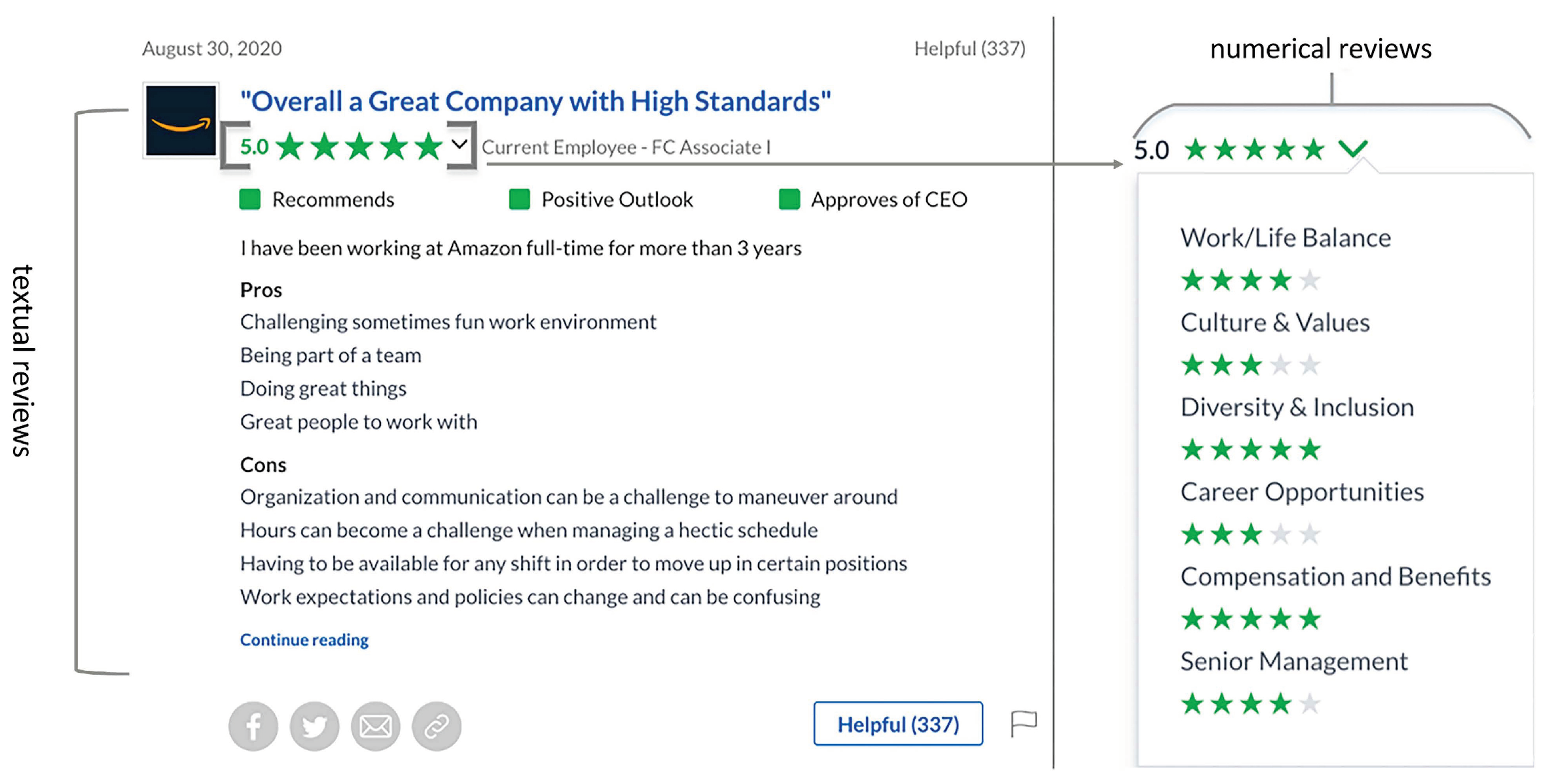

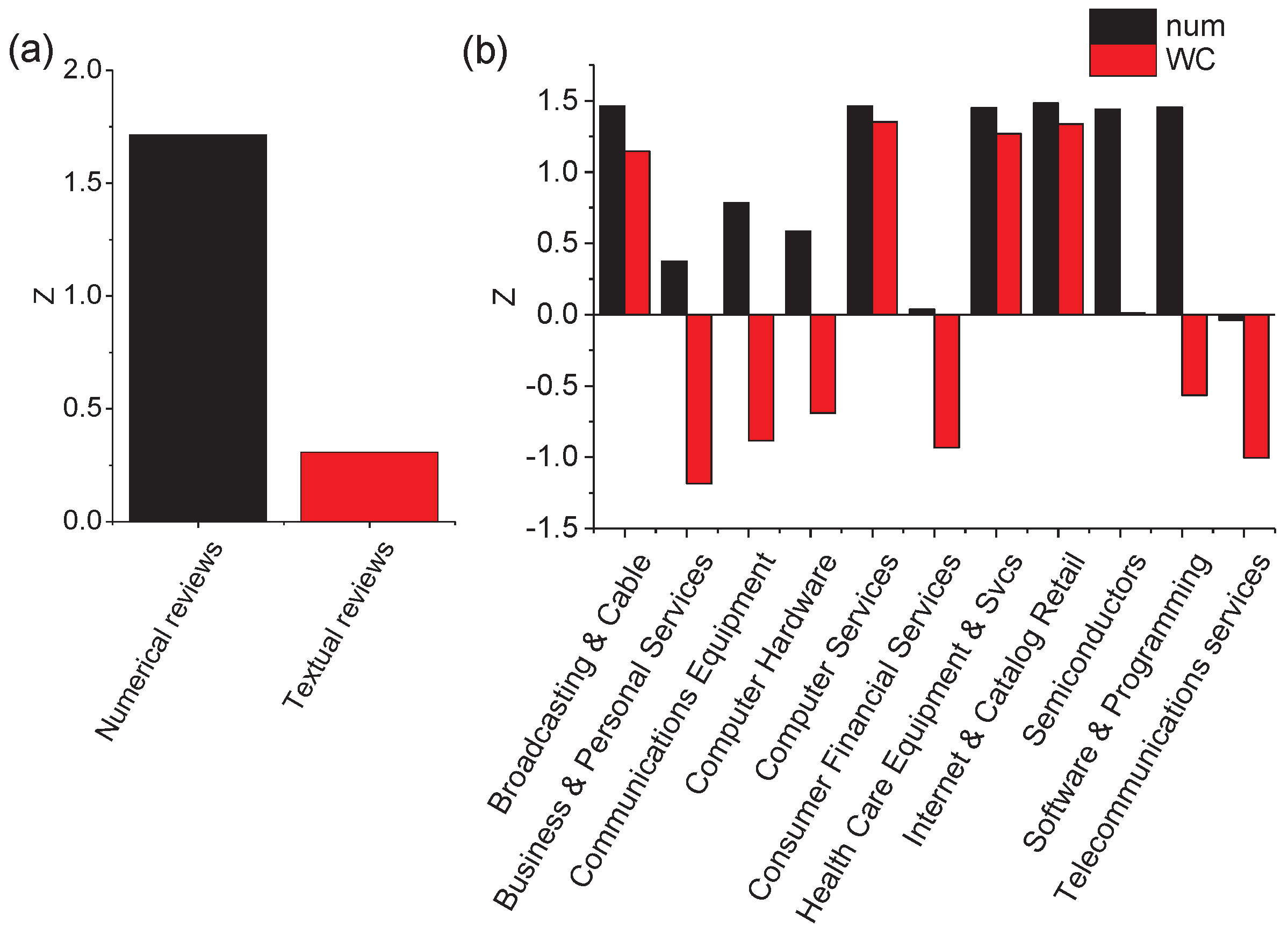
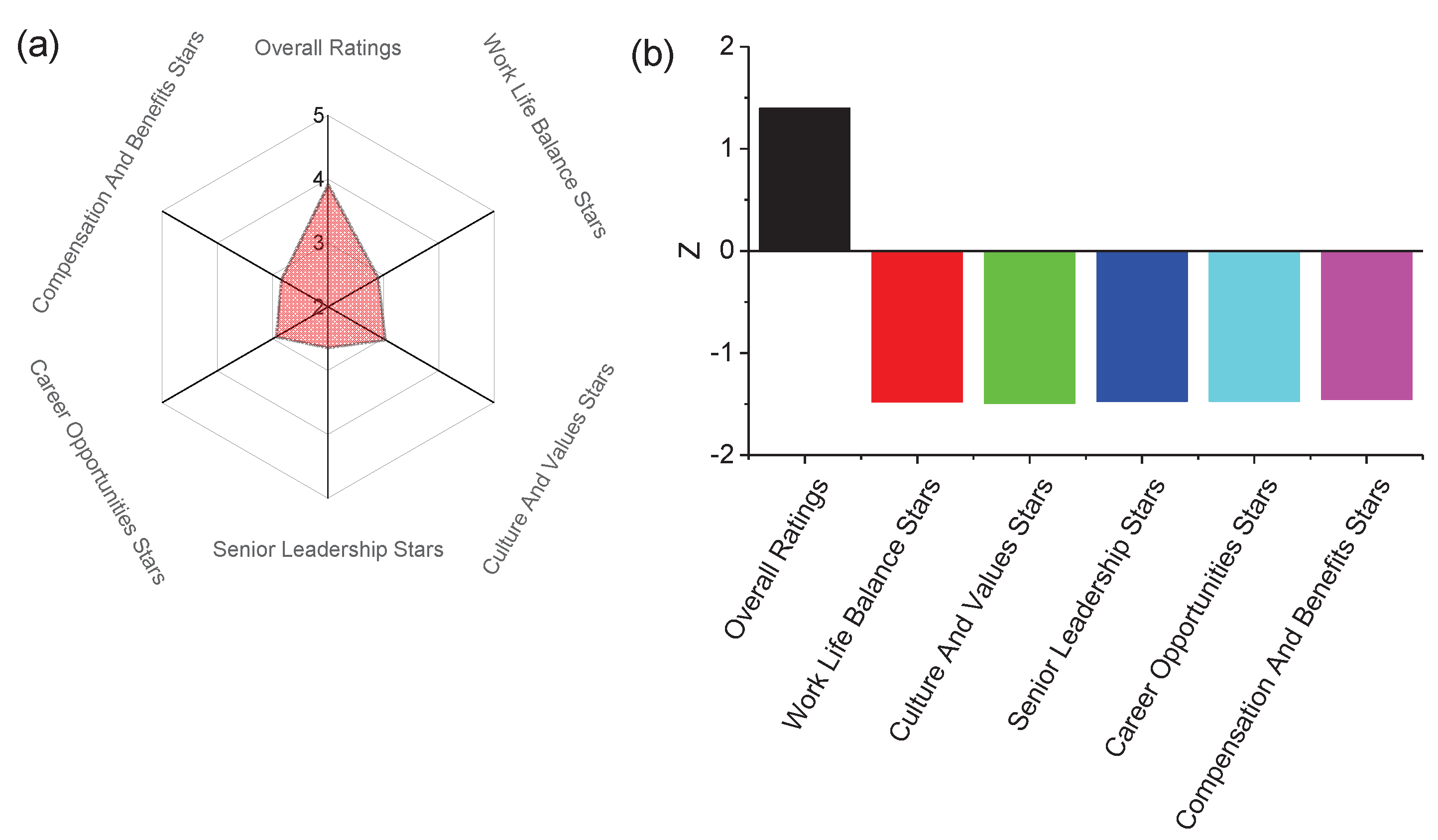

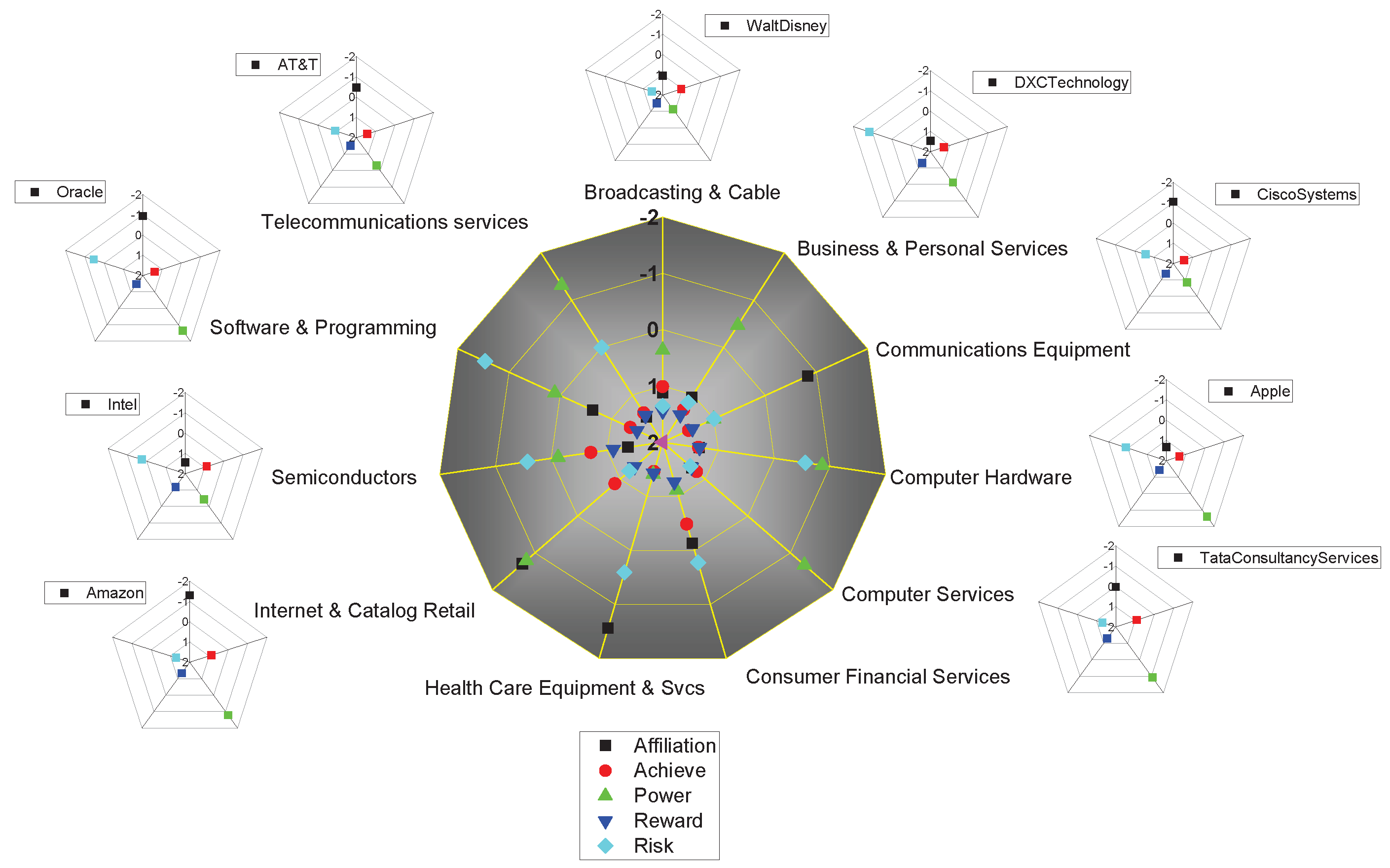
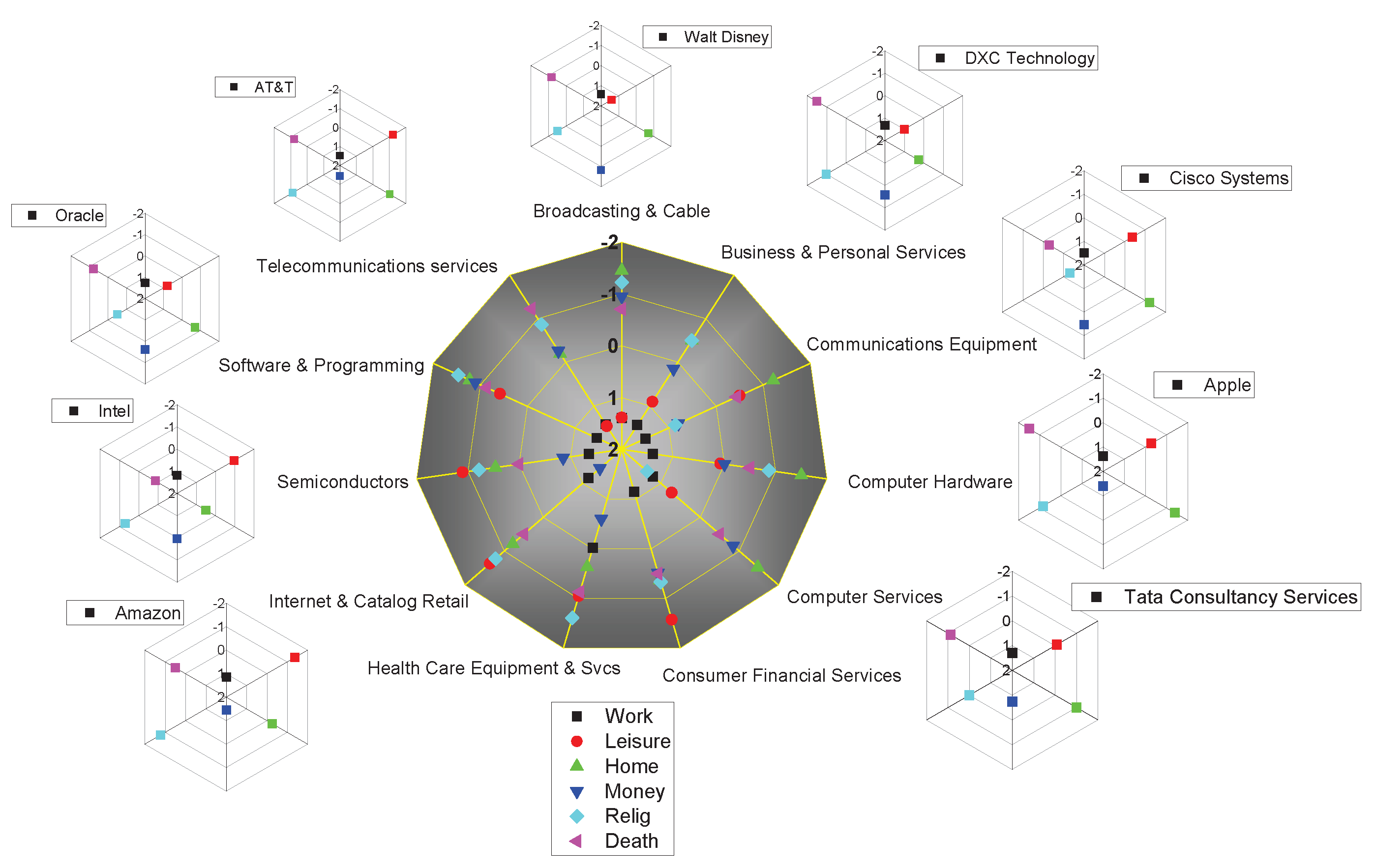
| Industry | Company |
|---|---|
| Broadcasting & Cable | Walt Disney(3593), DISH Network(2015) |
| Business & Personal Services | DXC Technology(11764), Automatic Data Processing(7041) |
| Communications Equipment | Cisco Systems(10626), Nokia(6739), Ericsson(4357) |
| Computer Hardware | Apple(11678), Dell Technologies(10833), Hewlett Packard Enterprise(7667), HP(3505), Fujitsu(2099), Lenovo Group(1065) |
| Computer Services | Tata Consultancy Services(46806), Cognizant(37946), IBM(35078), Accenture(32437), Infosys(24063), Capgemini(16988), Alphabet(10398), Facebook(2699) |
| Consumer Financial Services | PayPal(2424) |
| Health Care Equipment & Svcs | Philips(1948) |
| Internet & Catalog Retail | Amazon(54230), eBay(1534), Netflix(541) |
| Semiconductors | Intel(7961), Samsung Electronics(4282), Qualcomm(3114), Micron Technology(1879), Texas Instruments(1202), Broadcom(1188), NVIDIA(1032), Applied Materials(940), NXP Semiconductors(729) |
| Software & Programming | Oracle(18449), Microsoft(12165), SAP(9896), Salesforce.com(5486), VMware(3302), Adobe(1805), Fiserv(2824) |
| Telecommunications services | AT&T(11915), Verizon Communications(9953), Vodafone(5755), BT Group(2606), TELUS(2531), Telstra(1713), Orange(1316), SingTel(765), Telefonica(567) |
| Category | Abbrev | Examples | Z-Score |
|---|---|---|---|
| Personal pronouns | ppron | I,them,her | −1.68 |
| 1stperssingular | i | I,me,mine | 1 |
| 1stpersplural | we | we,us,our | −1.53 |
| 2ndperson | you | you,your,thou | −1.7 |
| 3rdperssingular | shehe | she,her,him | −1.73 |
| 3rdpersplural | they | they,their,they’d | −1.65 |
| Psychological Processes | |||
| Affective processes | affect | happy,cried | 1.62 |
| Positive emotion | posemo | love,nice,sweet | 1.62 |
| Negative emotion | negemo | hurt,ugly,nasty | −1.73 |
| Anxiety | anx | worried,fearful | 0.9 |
| Anger | anger | hate,kill,annoyed | −1.41 |
| Sadness | sad | crying,grief,sad | 0 |
| Social processes | social | mate,talk,they | −1.64 |
| Family | family | daughter,dad,aunt | −0.58 |
| Friends | friend | buddy, neighbor | 1.52 |
| Female references | female | girl,her,mom | −1.41 |
| Malereferences | male | boy,his,dad | −1.73 |
| Cognitive processes | cogproc | cause,know,ought | −1.6 |
| Insight | insight | think, know | 1.18 |
| Causation | cause | because,effect | −1.53 |
| Discrepancy | discrep | should,would | −1.66 |
| Tentative | tentat | maybe,perhaps | −1.61 |
| Certainty | certain | always,never | 1.21 |
| Differentiation | differ | hasn’t,but,else | −1.65 |
| Perceptual processes | percept | look,heard,feeling | −1.51 |
| See | see | view,saw,seen | −1.53 |
| Hear | hear | listen,hearing | −1.73 |
| Feel | feel | feels,touch | 1.09 |
| Biological processes | bio | eat,blood,pain | 0.9 |
| Body | body | cheek,hands,spit | −0.9 |
| Health | health | clinic,flu,pill | 1.11 |
| Sexual | sexual | horny,love,incest | −1 |
| Ingestion | ingest | dish,eat,pizza | −0.96 |
| Drives | drives | 1.6 | |
| Affiliation | affiliation | ally,friend,social | 1.73 |
| Achievement | achieve | win,success,better | 1.48 |
| Power | power | superior,bully | −1.53 |
| Reward | reward | take,prize,benefit | 1.63 |
| Risk | risk | danger,doubt | 1.6 |
| Time orientations | TimeOrient | ||
| Pastfocus | focuspast | ago,did,talked | −1.4 |
| Presentfocus | focuspresent | today,is,now | −1.73 |
| Futurefocus | focusfuture | may,will,soon | −1.64 |
| Relativity | relativ | area,bend,exit | −1.39 |
| Motion | motion | arrive,car,go | −1.67 |
| Space | space | down,in,thin | −1.36 |
| Time | time | end,until,season | −1 |
| Personal concerns | |||
| Work | work | job,majors,xerox | 1.56 |
| Leisure | leisure | cook,chat,movie | 0.26 |
| Home | home | kitchen,landlord | −1.6 |
| Money | money | audit,cash,owe | −0.93 |
| Religion | relig | altar,church | −1.73 |
| Death | death | bury,coffin,kill | −1.73 |
| Informal language | informal | 1.73 | |
| Swearwords | swear | fuck,damn,shit | −1 |
| Netspeak | netspeak | btw,lol,thx | 1.73 |
| Assent | assent | agree,OK,yes | 1.73 |
| Nonfluencies | nonflu | er,hm,umm | 0.58 |
| Fillers | filler | Imean,youknow | 0 |
Publisher’s Note: MDPI stays neutral with regard to jurisdictional claims in published maps and institutional affiliations. |
© 2022 by the authors. Licensee MDPI, Basel, Switzerland. This article is an open access article distributed under the terms and conditions of the Creative Commons Attribution (CC BY) license (https://creativecommons.org/licenses/by/4.0/).
Share and Cite
Ren, Z.-M.; Du, W.-L.; Wen, X.-Z. The Psychological Effects of Digital Companies’ Employees during the Phase of COVID-19 Pandemic Extracted from Online Employee Reviews. Sustainability 2022, 14, 2609. https://doi.org/10.3390/su14052609
Ren Z-M, Du W-L, Wen X-Z. The Psychological Effects of Digital Companies’ Employees during the Phase of COVID-19 Pandemic Extracted from Online Employee Reviews. Sustainability. 2022; 14(5):2609. https://doi.org/10.3390/su14052609
Chicago/Turabian StyleRen, Zhuo-Ming, Wen-Li Du, and Xing-Zhang Wen. 2022. "The Psychological Effects of Digital Companies’ Employees during the Phase of COVID-19 Pandemic Extracted from Online Employee Reviews" Sustainability 14, no. 5: 2609. https://doi.org/10.3390/su14052609
APA StyleRen, Z.-M., Du, W.-L., & Wen, X.-Z. (2022). The Psychological Effects of Digital Companies’ Employees during the Phase of COVID-19 Pandemic Extracted from Online Employee Reviews. Sustainability, 14(5), 2609. https://doi.org/10.3390/su14052609






